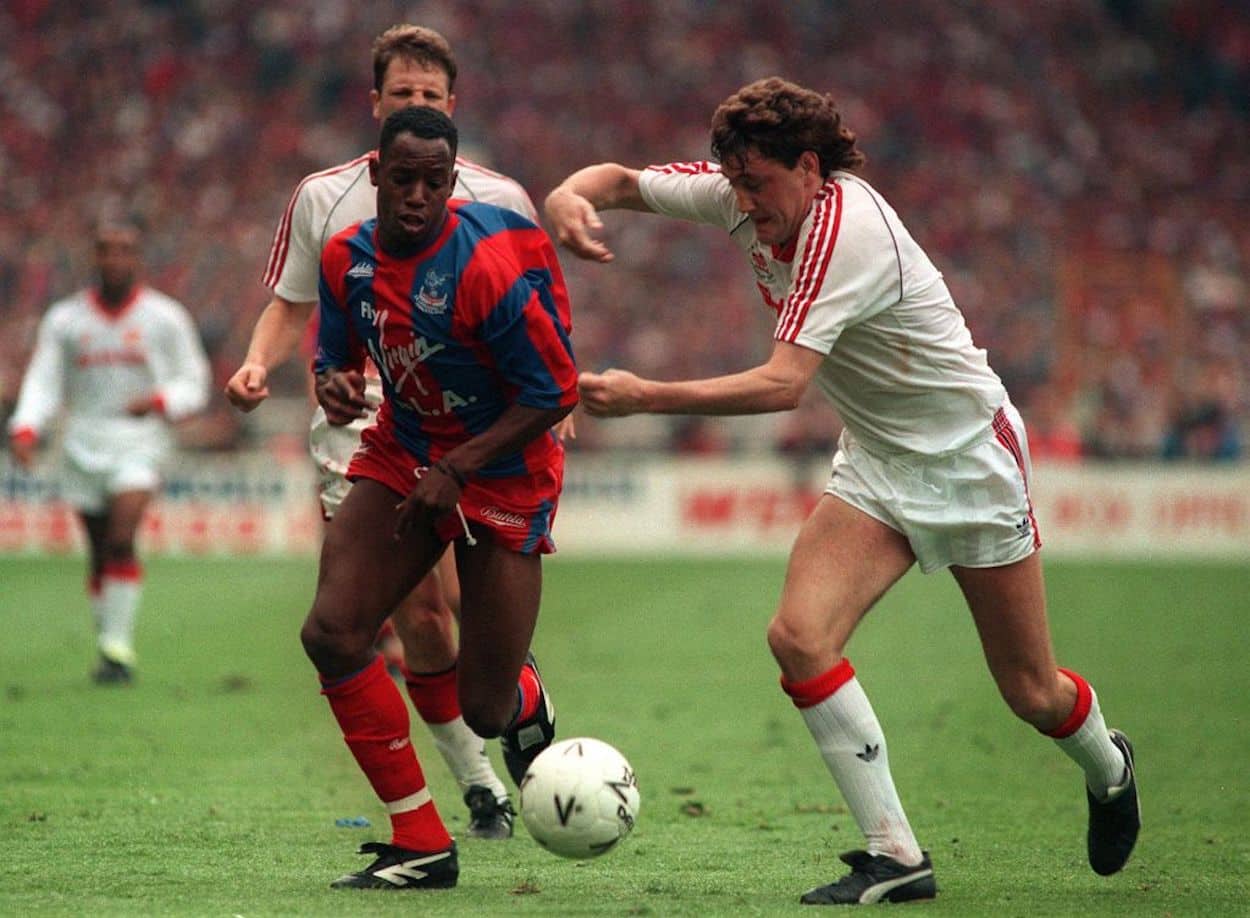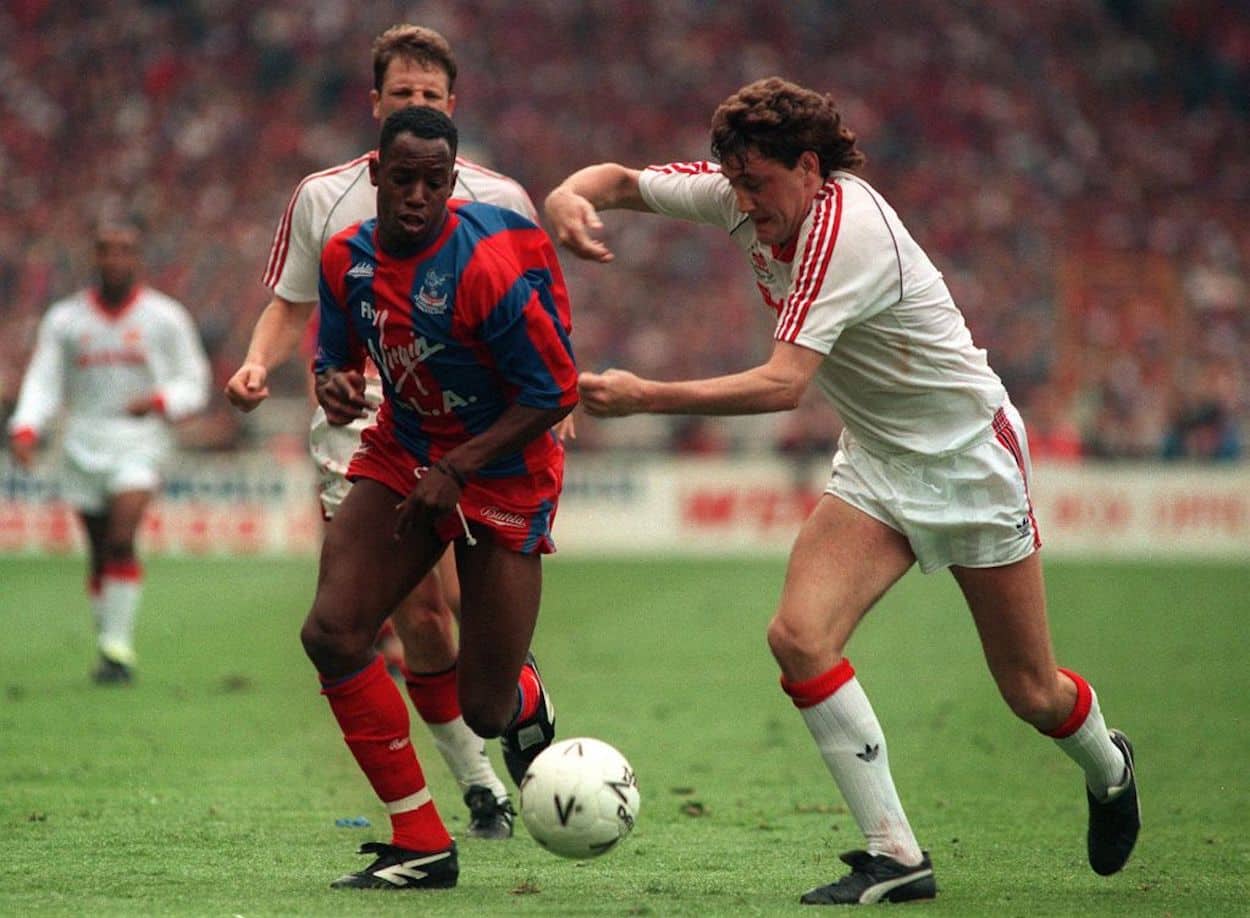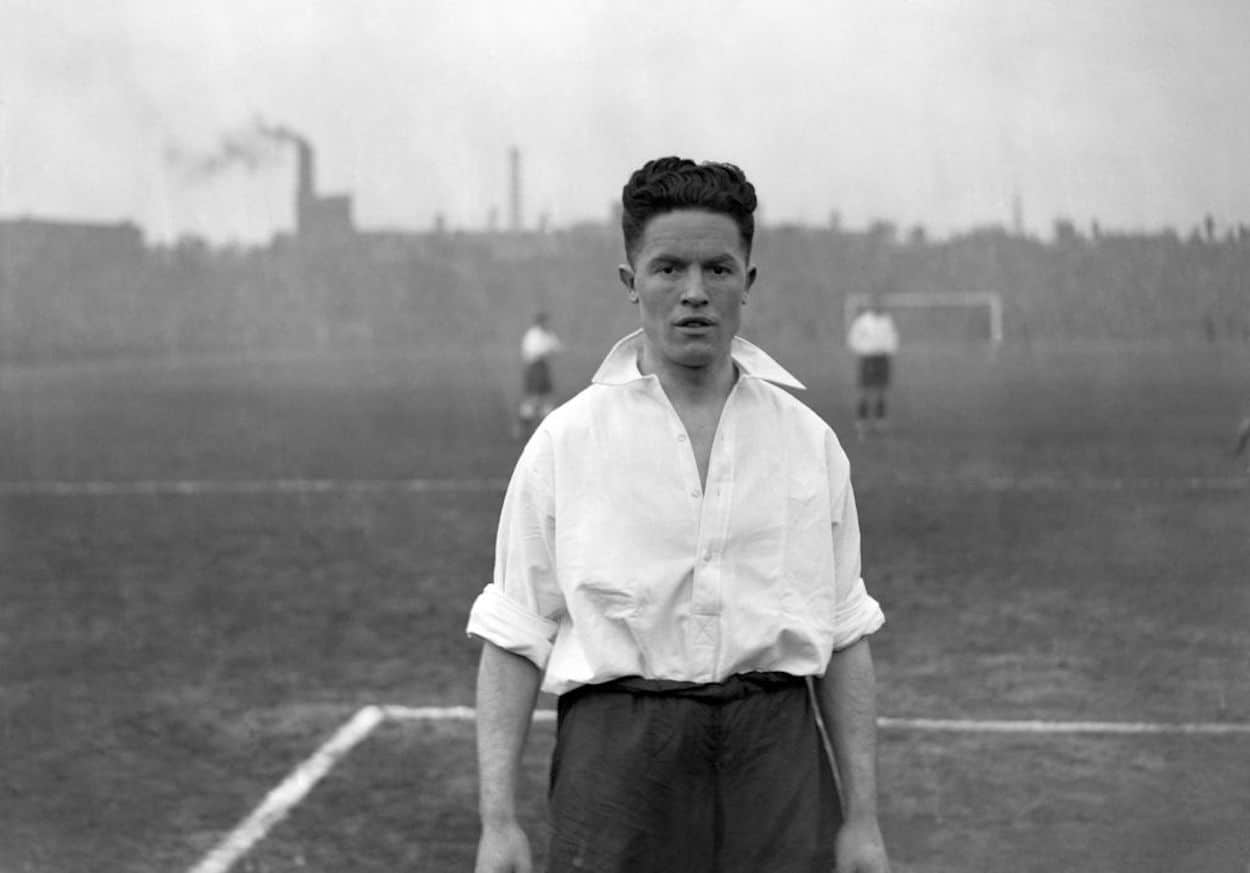Soccer
Ian Wright for a Set of Weights and 5 Other Bizarre Transfer Fees

While it might seem jarring to North American sports fans, it’s rare for a soccer player to move via a trade or free agency. For the most part, deals take place through transfers, when one club pays another a sum of money to release the player in question from their contract. That player will then sign a deal with the new club, completing the move.
Although those transfer fees can swell to upwards of $100 million, that wasn’t always the case. In the past, deals have gotten done for smaller sums and, in some circumstances, a relatively insignificant amount of goods. Let’s check out some of those unconventional transfer fees.
Ian Wright moved to Crystal Palace in exchange for a set of weights

These days, Ian Wright is largely known as one of Arsenal’s beloved legends and a TV pundit. The striker, however, wasn’t always a star.
As he laid out in a Players’ Tribune story, Wright was playing semi-pro soccer for Greenwich Borough. Crystal Palace offered him a trial, and despite fears about uprooting his life and being unable to provide for his family, he took his chance. He impressed, and, from there, the rest is history.
As you might expect, Greenwich Borough didn’t expect much in compensation for the player. As recorded in a 2014 ESPN piece, Palace gave the club a set of weights in exchange for the striker. Not a bad deal for a player who’d score 90 goals for the Eagles before shining in North London.
At least 3 players were transferred for various amounts of meat
As the cliche says, the way to a man’s heart is through his stomach. On a handful of occasions, that proved to be true in the transfer market.
- Within the same ESPN piece, three food-based transfers are mentioned. They are:
- Ion Radu moving from Jiul Petrosani to Valcea for two tons of beef and pork.
- Marius Cioara moving from UT Arad to Regal Horia for 15kg of sausages.
- Kenneth Kristensen moving Vindbjart to Floey for his weight (about 170lb) in shrimp)
Food, for better or worse, does seem to be a universal language.
Beer helped facilitate a transfer in the 1920s

It’s safe to say that you probably shouldn’t drink too heavily while negotiating a big-time business deal. In the 1920s, though, beer did help to get a football transfer over the line.
As noted in a Yahoo post and further fleshed out in an old Betfair write-up, Ernie Blenkinsop moved from Cudworth Village to Hull City in the early 1920s. And what was the transfer fee for a promising defender at the time? £200 and 80 pints of ale. ESPN, however, records the fee as £100 and a barrel of beer.
Regardless of the price, though, the left-back didn’t stay for long. After a single season in Hull, though, Blenkinsop transferred again, this time to Sheffield Wednesday. This time, his transfer fee was £1250, according to EnglandFootballOnline, which, in turn, cites Douglas Lammings’ An English Football Internationalist Who’s Who.
Either that was one expensive round of drinks, or Hull turned quite a profit.
Gary Pallister literally moved for a bag of balls (and some other supplies)
If you’re a longtime sports fan, you’ve probably heard the cliche that a player was traded for a bag of balls. In Gary Pallister’s case, that really did happen.
After coming up with non-league Billingham Town, the defender moved to Middlesborough for the princely sum of what ESPN describes as “a set of kit, some goal nets, and a bag of balls.”
That relatively small “fee” shouldn’t reflect poorly on Pallister, though. He would leave Middlesborough for the (then-massive) price of £2.3 million, moving to Manchester United. The defender would spend nearly a decade at Old Trafford, winning the league four times, and earned 22 England caps.
Like Sportscasting on Facebook. Follow us on Twitter @sportscasting19 and subscribe to our YouTube channel.
RELATED: Manchester United’s Interest in Marko Arnautovic Proves the Club Hasn’t Learned a Thing











